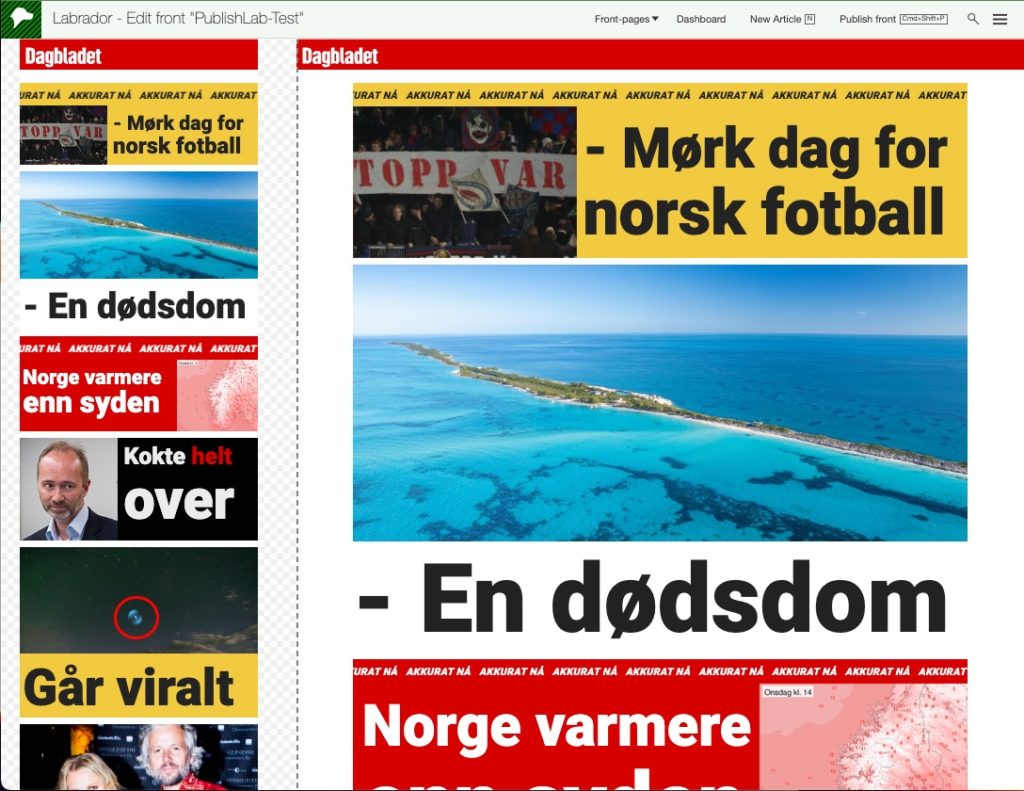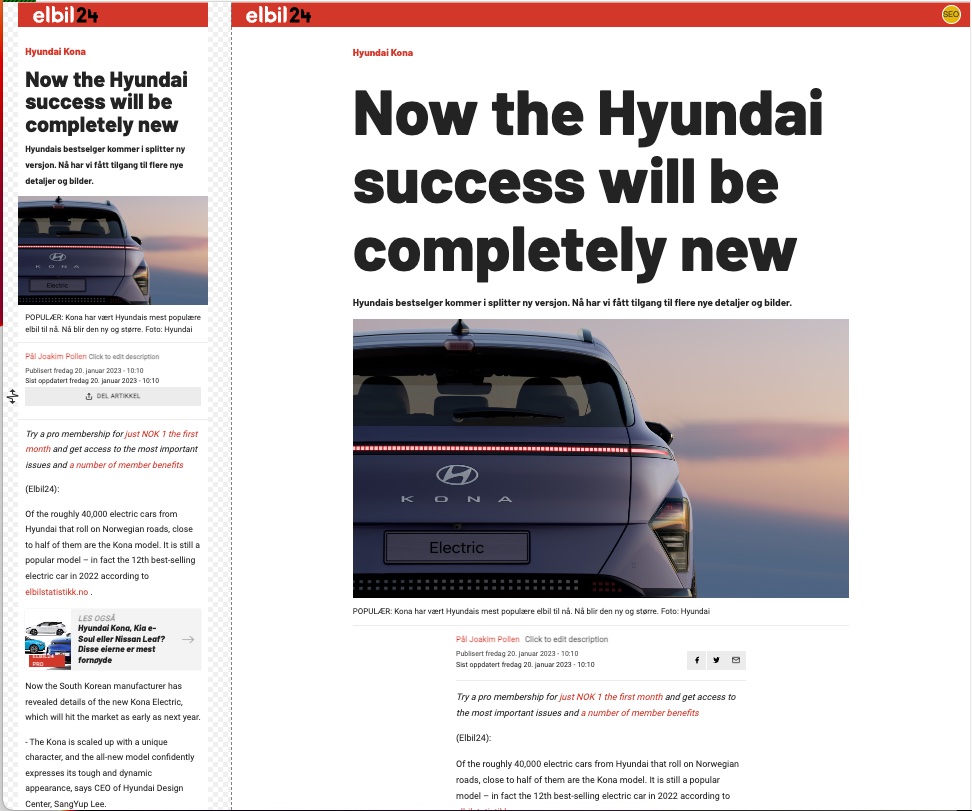|
Getting your Trinity Audio player ready...
|
A number of publishers have spun off in-house tech they’ve developed, with The Washington Post’s Arc XP and Toronto Globe & Mail’s Sophie.io being two notable examples. To this list you can now add Labrador CMS, a system that was nominated as publisher platform of the year in the 2022 Digiday Awards.
Founded in 1873 and 1878 respectively, Aller Media and Egmont are two of Northern Europe’s most successful news and magazine publishers. Faced with ongoing newsroom challenges, the two publishers forged a joint venture in 2007 to develop a customized SaaS publishing platform for their newsrooms.
Specifically, the two publishers needed a low code and intuitive solution that overcame the limitations of traditional in-house solutions and custom-tweaked platforms such as WordPress and Drupal.
The project started in Norway’s national newspaper Dagbladet in 2008 as a corporate venture project and, fast forward fourteen years, Labrador CMS was nominated as publisher platform of the year at the most recent Digiday awards.
Just as with Washington Post’s Arc XP CMS, Labrador CMS has subsequently been spun off into its own company with the support of venture capitalists Skagerak Capital. The software now powers over 200 sites in six countries and is used by over 2,000 journalists globally. Clients include Elle, Dagbladet, ComputerWorld, GB News and TV2.no, the largest commercial broadcaster in Norway.



In-house versus SaaS, and the dangers of releasing tech too early
When the system was first released, industry reception was muted. Speaking to WNIP, Jan Thoresen, CEO of Labrador CMS says, “The market was simply not ready for it as publishers were still attached to in-house solutions. However, now that everything has moved to the cloud, everyone has turned their focus to quality journalism, distribution, personalization algorithms, and unique paywall offerings.”
2007 seems an age ago, but Thoresen says the time wasn’t wasted, “Tech can be released too early but for publishers there is no room for error – the system needs to work perfectly straight away. That’s why we’ve put fifty years’ worth of combined work into this, developing and evolving it into a state-of-the-art, turnkey newsroom solution for publishers.”
As a CEO in the media industry, I understand the challenges. Many publishers are spending months and huge amounts of money when upgrading their CMS.
Labrador is a low-code, fully hosted professional approach to SaaS Content management created by journalists for journalists. Publishers can focus on journalism while we handle the technical side.
Jan Thoresen, CEO, Labrador CMS
“By making a solution created by journalists for journalists, we know exactly the capabilities they need – our publisher clients are integrating Labrador CMS with newsletters, paywalls, data layers, personalization, and ad servers.”
Our system currently handles 2 Billion page views a month.
The importance of shortening workflow times
Thoresen feels that for a CMS to work effectively, it has to cut workflow times, “One customer using the Labrador CMS saw a 25% improvement in time spent producing an article and a 20% improvement in time saved reusing content from print to digital. That’s significant when you total the time saved and the increase in journalist efficiency.”
“WordPress is not well-suited for many publishers with high production volumes and multiple variations, especially front pages. We wanted a solution that addresses this but also offers simplicity, speed and ease of use. Most of our publishers are seeing significant improvements in productivity as well as far less calls to their tech support teams.”
With twenty staff and a plan to double within the next year, Thoresen concludes, “Our goal is to offer an accessible and effective CMS to companies who want to publish quality journalism online, even for the customers that don’t have any developers or technical skills.”
With the company’s recent nomination as publishing platform of the year in 2022’s Digiday Awards, coupled with a competitive pricing structure, it appears they might have just hit on a unique niche for small to medium-sized publishers hesitant to invest in a quickly outdated in-house CMS.



